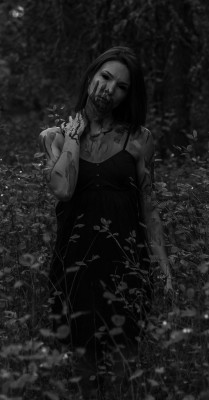Have you ever wondered where the modern vampire first appeared within human history? Well, any documentation outside of ancient mythology came with historic value, from credible sources such as historian William of Newburgh. Due to his reputation as a noteworthy and careful historian, his History of English Affairs serves as one of the earliest records of vampire phenomena of the British Isles. Unfortunately, his reliance upon spoken folklore caused these chronicles to come under scrutiny and these chronicles are often considered to have vague and inaccurate content. The reliance on this folklore was due to commonplace belief in the dead returning to life as vampires, so it seemed that diminishing these beliefs would have been considered a disregard of viable information. The relish with which Willaim of Newburgh accounts for the living dead in several of his chronicles is present in his History of English Affairs, he speaks of visible ghosts or animated corpses that were believed to have returned from the grave to terrorize the living–his reports documented several stories of the undead, however, they do not attest to any blood consumption by such creatures. So were these true vampires he was documenting or were these revenants a different type of demon or spirit that was dedicated to terrorizing those who still lived? Well, they did have a few similarities with what we consider vampires.
The first report from William of Newburgh occurred in Buckinghamshire, in which a man returned from the grave and assaulted his wife for several nights; when she finally told her family about what was happening, her husband returned to terrorize her family and her neighbors as well. Only when a local clergyman wrote an absolution and placed it upon the corpse, was the body formally bound to the grave. Another report from History of English Affairs states that the body of a deceased clergyman escaped from his grave to haunt the abbey and in particular a woman from the town in which he had served in life. This woman sought out a monk who vowed to stand guard over the grave at night; when the corpse tried to escape from the grave again, the monk attacked it with an ax until it returned to its grave. When a group of monks dug up the corpse the next day, they found it sleeping in a pool of its own blood from ax wounds. They burned the corpse to ashes to prevent it from coming back again. This wasn’t the only account in which the returning corpse was burned to ashes in order to keep it from returning, as it is a common belief that vampires are exceptionally difficult to kill, but their vulnerability lies during the day while they are sleeping. As nocturnal creatures, they reportedly avoided the sunlight and then would come out at night as a means to hide their true nature. None of these reports indicated a bloodlust, but it’s still possible that these instances were missed.
Vampire lovers aren’t always aware of the vast amounts of lore that is connected to their favored creatures of the night, but the long history of the blood-sucking undead is as colorful as it is convoluted and complex. Within what can be considered the modern era, the lore attached to vampires has inspired hundreds of books, movies, and television references to these creatures and will continue to do so in times to come.
Ambrogio, the First Vampire
The very first recorded story that depicts the origin of vampires is from ancient Greek mythology, it is not as well-referenced as it should be in modern times. This story came from Delphi, a city that has existed and been inhabited since 1600 BC–the Scriptures of Delphi written by the infamous Oracle of Delphi were one of many archaeological discoveries that have emerged. These scriptures provided a solid foundation of ancient beliefs and evidence, but there are reportedly other archaeological finds that date back even further into ancient times that validate the existence of vampires. Within these scriptures is a section that has come to be known as the “Vampire Bible,” which tells the story of a man named Ambrogio, an Italian adventurer whose lifelong dream was to have his fortune told by the Oracle of Delphi.
Upon meeting this Oracle, she offered only a few cryptic phrases which translated to, “The curse. The moon. The blood will run.” Needless to say, our hero Ambrogio was disturbed by this message and spent the night pondering this message and its possible meanings. When the morning came, a sister of the Oracle, the beautiful young maiden Selene, came to care for her sister and the temple as she did every morning–upon meeting her, he decided to stay and met with her again every morning before he fell deeply in love with her. He asked for her hand in marriage and to return with him to Italy, but the god Apollo had watched this all unfold and took great disrespect that a mortal would try to take the maiden that was dedicated to him.
In a rage, Apollo cursed Ambrogio so that the sun would burn his flesh, which kept him from meeting Selene again the next morning and depart with her to his homeland. Ambrogio sought the protection of Hades, having fled to the caves, and the god of the underworld made a deal and Ambrogio had to leave his soul with Hades. Hades bestowed upon Ambrogio a magical wooden bow with eleven arrows, with which he was to hunt and kill a creature and offer it up to Artemis in order to gain her favor; once this had happened, he would have to steal her silver bow and deliver it back to Hades in order to retrieve his soul. Unfortunately for Ambrogio, he squandered the arrows killing swans and writing poetry to Selene in their blood. Realizing his plight, he stole the silver bow of Artemis anyway, but upon discovery of her missing bow, she too cursed Ambrogio, so that the touch of silver would also burn his flesh.
This new curse caused him to be unable to deliver the bow to Hades and in his grief, he fell to his knees and begged for mercy–Artemis felt pity for him and gave him one more chance. She bestowed upon Ambrogio the speed and strength of a god so that he would be as powerful a hunter as she was, as well as fangs so he may draw blood from his prey and continue to write his poetry. Newly immortal, Ambrogio was to abandon all other gods but the virgin goddess Artemis and with that pursuit of any physical love with Selene. Even though he agreed to the demands of Artemis, he wrote Selene a message that night, instructing her to meet with him on his ship. She found a coffin in the hull of the ship, with a note attached that told her to order the ship to sail and to not open the coffin until sunset–they ended up living inside of the caves of Ephesus together for many years, Ambrogio not having aged a day but Selene, still a mortal fell sick with age.

Ambrogio knew that he would not be able to spend the afterlife with Selene because Hades still possessed his soul, so he sacrificed a swan to Artemis to gain the favor of her appearance. Artemis was pleased with his loyalty and service to her, so she made him one final deal, that he may touch Selene one time in order to drink her blood. Upon drinking her blood, her mortal body would die, but she would return an immortal like himself and they would be able to spend eternity together. Selene’s spirit rose to the heavens and at the behest of Artemis became the Goddess of moonlight, where her soft light would touch Ambrogio and the children of the night who were created by him.
The Truth Behind the Legend of Dracula
In the whole of vampire lore, there are no stories that have caused more fear than Dracula; this legendary creature was invented by Bram Stoker in his 1897 novel, Dracula. His novel has inspired more horror movies, television shows, and books than any other vampire origin story–while Dracula as a character in the book is entirely fictional, Stoker actually gave him the likeness of a real historical figure who lusted after blood, who was rumored to have executed between 40,000 and 100,000 people in his famous fashion of impalement. According to legend, Vlad III allegedly feasted on the blood of the dying victims as they writhed in agony, but according to the historical references of Vlad Tepes he was regarded as a hero of his land.
Vlad Tepes, Prince of Wallachia
Son of Vlad Dracul, Vlad Tepes the Prince of Wallachia is more famously known as Vlad the Impaler–this moniker served as testimony to the brutal way in which he dealt with his enemies. Born in 1431 in what is now known as Transylvania, a central region of Romania–but according to a professor of medieval history and archaeology at the University of Florida, there is no record of Vlad Tepes ever having owned property in Transylvania. This means that while Stoker’s Dracula may be centralized in Transylvania, the historic Dracula, Vlad Tepes, didn’t have much to do with Transylvania after his birth. The supposed Castle Dracula was never inhabited by Vlad III, but has been turned into a tourist attraction due to its location and physical appearance.
The Order of the Dragon
The year of Vlad the Impaler’s birth, his father was inducted into the Order of the Dragon, an order of knights, the designation of which earned Vlad II the surname of Dracul, the old Romanian word which translated to “dragon,” this was derived from a related word, drac which translated to “devil.” Eventually, this would lead Vlad III to inherit the surname and come to be known as Drăculea, son of Dracul.
Vlad the Impaler
According to the legends that were spoken after the death of Vlad III, he got the name of the Impaler, when he was the voivode, or ruler of Wallachia. He had invited hundreds of boyars–aristocratic Romanians, who had played a pivotal role in dethroning him–to a banquet where he had them all killed and impaled upon spikes while they were still warm. The terror he reigned and the blood he spilled didn’t stop there, as he is also credited with doing the same to dozens of Saxon merchants who had allied themselves with the boyars who had stolen his throne. Another alleged bloody tale is when a group of Ottoman messengers refused to take their turbans off due to religious necessity, at which point Vlad had their turbans nailed to their skulls so they would forever remain on their hands.

Films that are based on Dracula
- Dracula (1992)
- Dracula Untold (2014)
- Blade Trinity (2004)
Vampires as they are in the Movies
- Interview with the Vampire (1994)
- Blade (1998)
- Vampires (1998)
- Blade II (2002)
- Queen of the Damned (2002)
- I Am Legend (2007)
- Let the Right One In/Låt den rätte komma in (2008)
- Let Me In (2010)
- Fright Night (2011)

Georgia-based author and artist, Mary has been a horror aficionado since the mid-2000s. Originally a hobby artist and writer, she found her niche in the horror industry in late 2019 and hasn’t looked back since. Mary’s evolution into a horror expert allowed her to express herself truly for the first time in her life. Now, she prides herself on indulging in the stuff of nightmares.
Mary also moonlights as a content creator across multiple social media platforms—breaking down horror tropes on YouTube, as well as playing horror games and broadcasting live digital art sessions on Twitch.


